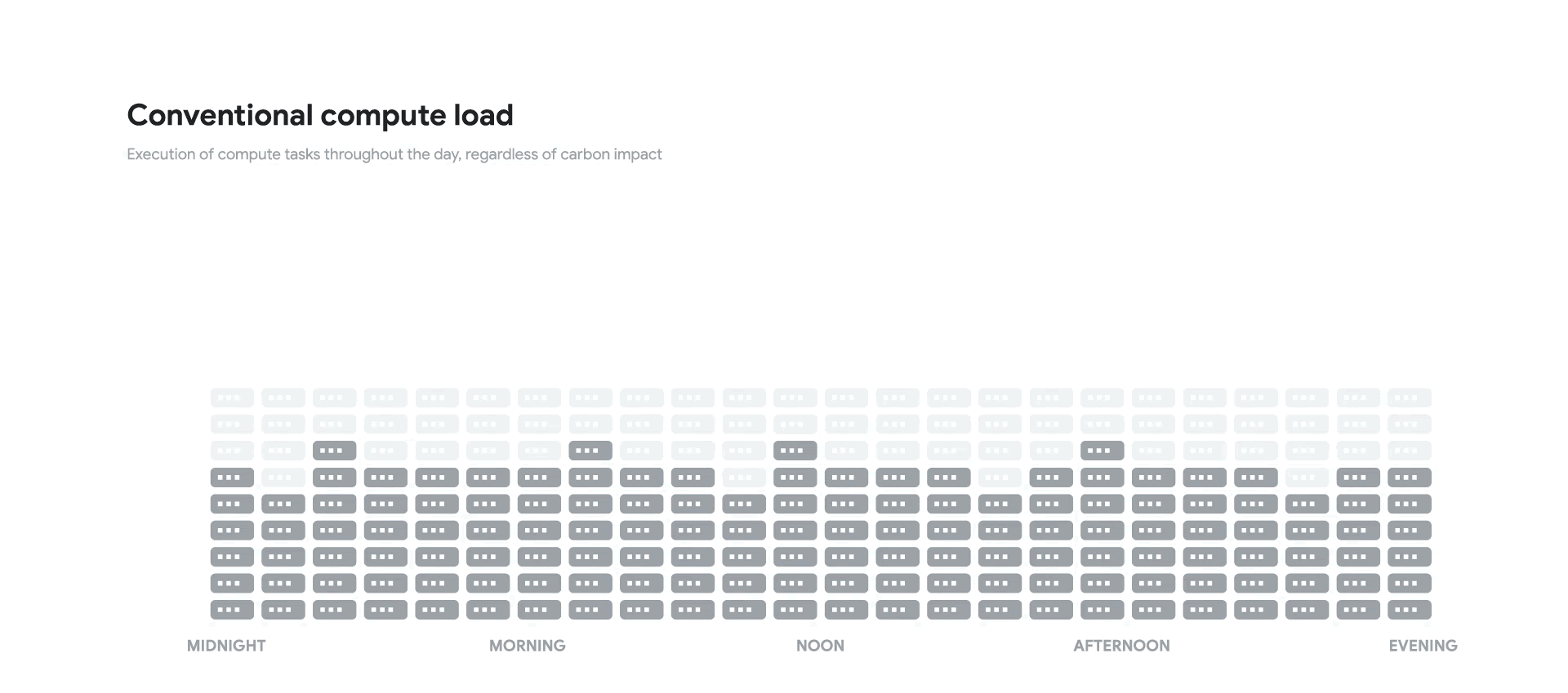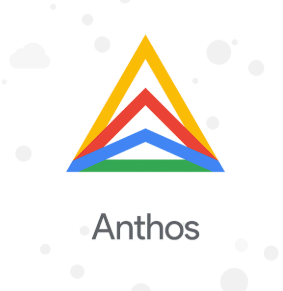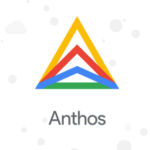Google data centers watch the weather to make the most of renewable energy
Google’s data centers run 24/7 and suck up a ton of energy — so it’s in both the company’s and the planet’s interest to make them do so as efficiently as possible. One new method has the facilities keeping an eye on the weather so they know when the best times are to switch to solar and wind energy.
The trouble with renewables is that they’re not consistent, like the output of a power plant. Of course it isn’t simply that when the wind dies down, wind energy is suddenly 10 times as expensive or not available — but there are all kinds of exchanges and energy economies that fluctuate depending on what’s being put onto the grid and from where.
Google’s latest bid to make its data centers greener and more efficient is to predict those energy economies and schedule its endless data-crunching tasks around them.
It’s not that someone at Google looks up the actual weather for the next day and calculates how much solar energy will be contributed in a given region and when. Turns out there are people who can do that for you! In this case a Danish greentech firm called Tomorrow.
“Organizations are realizing that using electricity at the right time and the right place
allows them to reduce both their costs and their carbon footprint,” said Tomorrow CEO in a press release.
Weather patterns affect those energy economies, leading to times when the grid is mostly powered by carbon sources like coal, and other times when renewables are contributing their maximum.

This helpful visualization shows how it might work – shift peak loads to match times when green energy is most abundant.
What Google is doing is watching this schedule of carbon-heavy and renewable-heavy periods on the grid and shuffling things around on its end to take advantage of them. By stacking all its heavy compute tasks into time slots where the extra power they will draw is taken from mostly renewable energy sources, they can reduce their reliance on carbon-heavy power.
It only works if you have the kind of fluid and predictable digital work that Google has nurtured. When energy is expensive or dirty, the bare minimum of sending emails and serving YouTube videos is more than enough to keep its data centers busy. But when it’s cheap and green, compute-heavy tasks like training machine learning models or video transcoding can run wild.
This informed time-shifting is a smart and intuitive idea, though from Google’s post it’s not clear how effective it really is. Usually when the company announces some effort like this, it’s accompanied by estimates of how much energy is saved or efficiency gained. In the case of this time-shifting experiment, the company is uncharacteristically conservative:
“Results from our pilot suggest that by shifting compute jobs we can increase the amount of lower-carbon energy we consume.”
That’s a lot of hedging for something that sounds like a home run on paper. A full research paper is forthcoming, but I asked Google for more information. Shortly after posting this I received the following response from Ana Radovanovic, technical lead for the project:
Early results for the new system are promising, however, as you note, we are not sharing specific metrics at this time. Our team plans to publish a scientific paper later in the year which will contain a detailed overview of the load shifting methodology and the observed results from our roll out.
How much a single data center facility or an entire fleet can increase its use of renewable energy is dependent on a number of variables. As such, we are taking time to conduct additional analysis before we share specific numbers.
It seems they are holding off in order to better estimate the effect, but today being Earth Day it makes sense to publish the news early and augment it with more data later.
Powered by WPeMatico
Los Angeles Cleantech Incubator reboots its incubation program with 16-member cohort
The Los Angeles Cleantch Incubator is rebooting its incubator program and moving from rolling applications to a cohort model beginning with 16 new startups.
Los Angeles’ not-for-profit incubator exchanges sweat equity in the form of services and office space, and the promise of $20,000 in funding for local pilot projects, for a 1.5% to 3% stake in a company.
“This is a renewed incubation program switching to the cohort model. The great part of a rolling program was that you could meet the startups where they were. The challenge with that was giving founders steady programming,” said chief executive Matt Peterson.
Nearly one-third of the founders involved in the incubator’s latest program are women, over half of the founders are people of color and more than 5% are veterans, making the new cohort the most diverse in the incubator’s history.
Peterson is also flagging what he believes is a first for an incubator where startups can earn back their equity if they show hard numbers that indicate privileging diversity and access in hiring and in the availability of technologies and services to low-income communities.
Some of the companies in the incubator’s current cohort may also provide a small degree of support — and jobs — to Los Angeles residents hit hard by the social distancing measures the city and state have enacted to deal with the COVID-19 outbreak.
Companies like SparkCharge, ePave, and CERO Bikes are all companies that could employ local residents and launch shovel-ready projects with potential funding from local stimulus plans.
“As LA’s most established incubator, we have a strong track record of empowering and supporting entrepreneurs truly representative of our energetic, diverse and innovative city,” says Matt Petersen, chief executive officer of the Los Angeles Cleantech Incubator. “It is critical to help startups deliver solutions for clean air and greenhouse gas mitigation. By continuing our investment in startup incubation, we will help stimulate the economy now, invest in industries that will bring future clean jobs to our communities and spur innovation to develop climate mitigation solutions.”
The new incubator program will last two years and is structured in a way that allows for startups to buy back equity from the incubator upon completion of certain milestones.
Companies in the new class include:
-
Alumina Energy is a U.S.-based energy storage technology company designing and building energy storage systems for the utility, industrial and commercial scale power generation and process heat markets.
-
CERO Bikes is a family-owned and operated business that designs and produces compact electric cargo bikes.
-
ChargerHelp! is an on-demand charging station repair service.
-
ePave has developed a new composite material that can reduce the greenhouse gas effects of surfaces.
-
InPipe Energy has developed a technology that generates low-cost electricity from the flow of water through gravity-fed water pipelines.
-
Jump Watts sells fixed and mobile charging stations for all types of electric vehicles.
-
Maxwell Vehicles offers power train conversions, maintenance and management for light industrial vehicles to make the switch to electric or hybrid electric vehicles.
-
NeoCharge makes smart splitters that allow for faster home electric vehicle charging without the need for panel upgrades or other home modifications.
-
Noria provides education and services for industrial companies to improve efficiency by enhancing their lubrication processes.
-
Prime Lightworks makes electric propulsion systems for small satellites.
-
SEED sells a farm-in-a-box for folks who want to grow their own produce.
-
SparkCharge is a manufacturer of modular electric vehicle charging units. The company partners with roadside assistance companies to service electric vehicle owners when they run out of range.
-
Substance Power and Mobility is founded by a team of former aerospace and automotive entrepreneurs and executives and is working on developing energy storage hardware.
-
Sustainable Building Council uses modified shipping containers with grid-independent water and power to make affordable housing.
-
TBM Designs makes self-shading window systems using thermo-bimetal to reduce energy costs by cutting the need for air conditioning.
-
Xeal has an electric car charging system that makes chargers money-making assets for apartments and offices.
Powered by WPeMatico
Pepper’s bra wants to solve the woes of small-chested women
Ask any woman and she will tell you that most of her bras do not fit her optimally. In fact, a majority of women end up wearing the wrong size. A large part of the problem is that sizing is standardized, unlike women’s bodies. With every passing year, more people are also shopping online, meaning fewer opportunities to actually try on bras — a trend that’s only accelerating given the shutdown the world is experiencing right now.
One particular problem, and a widespread one, according to entrepreneurs Jaclyn Fu and Lia Winograd, is that bras are generally too big for small-chested women. It’s the reason the former co-workers came together to found Pepper, a three-year-old, Denver-based startup that’s expressly focused on creating bras that fit smaller cup sizes.
As Fu explains it, most bra companies use a size, say 36C, then apply that same design to other bra sizes, like a 32A. While the step is logistically sound — applying a standard base design to other sizes — it doesn’t translate well into actual fit.
“It means a person who is a 32A is wearing a design that was intended for a 36C, causing fit issues like cup gaps,” says Fu.
Usually, women try to resolve the problem by tightening their bra straps or changing sizes, but Pepper’s solution is to create its own, smaller cup molds from a factory in Medellin, Colombia, where Winograd grew up.
Fu made the first prototype for Pepper based on her own chest size. Since then, she’s gone to customers’ houses to conduct fittings and research. Beyond cup size, Pepper also addresses underwire woes, making its products less curved and shorter to follow the natural size of a smaller-chested woman.
To increase customer engagement, Pepper started virtual one-to-one fit sessions for customers who are buying a bra online for the first time, and like other companies has a “fit quiz” for people to take online, too.
Pepper now sells a wide variety of sizes, all the way from from 30A to 38B, and prices range from $48 to $54.
Pepper certainly isn’t the only startup trying to fit into the bra industry. Companies like Kala, SlickChicks and ThirdLove all tout comfort and inclusivity in sizing and fitting.
The biggest of the three is ThirdLove, a San Francisco DTC bra and underwear company that has raised $68.6 million in known venture capital to date, per Crunchbase. ThirdLove brands itself as a brand that sells a “bra for every body” with inclusive sizes, and is now expanding into retail, international markets and swim and athletic wear. The company was last valued at more than $750 million.
It’s unclear how many new brands the market can support, or that can survive this pandemic. Even companies with meaningful market share and fresh capital are struggling to stay afloat as shoppers reduce their spend right now. Earlier this month, ThirdLove laid off 30% of its staff, citing COVID-19’s impact on business.
Even still, Pepper’s founders remain optimistic. Pepper’s Kickstarter $10,000 launch campaign — staged in 2017 — was separately funded in less than 10 hours, Fu notes.
The success of that campaign just helped the company secure $2 million in seed funding from investors, including Precursor Ventures, New York University Innovation Fund and Denver Angels. Others participating include the co-founder of MyFitnessPal, Albert Lee.
Fu adds that the company, which employs three people, is “close to profitability” on a $3 million revenue run rate. In 2019, most of its sales came directly from consumers on their site — a good sign that its growth ties to user loyalty versus relying on partnerships with retailers.
The nuance of buying a bra has long been an in-person ordeal. But now, because of COVID-19’s spread and the resulting shut down of many brick-and-mortar stores, those who need a new bra might have to turn online for the very first time. It’s an opportunity for companies like Pepper to prove that they can master fit without measuring tape and a changing room.
Powered by WPeMatico
Cowboy VC’s Aileen Lee: Your coronavirus scenario planning should be more conservative
The tech industry (and the world at large) is not experiencing temporary anxiety — the uncertainty we’re all coping with is the new normal.
Sudden shifts in behavior have made some startups targeting slow-moving, old-school industries more relevant than they could have imagined, such as those in telehealth, distance learning and remote work. Most, however are seeing massive decreases in revenue, forcing them to cut costs and even lay off teams to slash burn rates. Other startups simply won’t be here in three to six months.
Cowboy Ventures founder and managing partner Aileen Lee, who coined the term “unicorn,” says tech companies going through scenario planning need to begin thinking long-term.
“We’ve spent the last month scenario planning with our portfolio companies, and in most cases, we’ll have conversations about what these scenarios can include,” said Lee. “And when we look at the planning around those scenarios, they often don’t feel conservative enough. Most entrepreneurs are optimists, and we are, too! But it seems safer to have more conservative plans [and start expecting] that this is going to impact us for longer and be worse than we expected.”
Lee and Cowboy Ventures partner Ted Wang joined TechCrunch on Tuesday for our first episode of Extra Crunch Live, a virtual speaker series for Extra Crunch members. In a live Q&A that included questions from myself and the Extra Crunch audience, Wang and Lee covered a wide range of topics, including PPP loans, advice for business leaders around layoffs, the right time to seek funding and the right firms from which to seek that funding, how to pitch during a downturn and which sectors in particular Cowboy is interested in financing right now.
You can check out the best insights from the call, or catch up on the full conversation via the YouTube embed below.
We have several outstanding guests, including Charles Hudson, Mitch and Freada Kapor, Mark Cuban, Roelof Botha, Hunter Walk and Kirsten Green, joining us on Extra Crunch Live over the next few weeks. Sign up for Extra Crunch to get access to all of them.
Powered by WPeMatico
Google Cloud’s fully managed Anthos is now generally available for AWS
A year ago, back in the days of in-person conferences, Google officially announced the launch of its Anthos multi-cloud application modernization platform at its Cloud Next conference. The promise of Anthos was always that it would allow enterprises to write their applications once, package them into containers and then manage their multi-cloud deployments across GCP, AWS, Azure and their on-prem data centers.
Until now, support for AWS and Azure was only available in preview, but today, the company is making support for AWS and on-premises generally available. Microsoft Azure support remains in preview, though.
“As an AWS customer now, or a GCP customer, or a multi-cloud customer, […] you can now run Anthos on those environments in a consistent way, so you don’t have to learn any proprietary APIs and be locked in,” Eyal Manor, the GM and VP of engineering in charge of Anthos, told me. “And for the first time, we enable the portability between different infrastructure environments as opposed to what has happened in the past where you were locked into a set of APIs.”
 Manor stressed that Anthos was designed to be multi-cloud from day one. As for why AWS support is launching ahead of Azure, Manor said that there was simply more demand for it. “We surveyed the customers and they said, ‘hey, we want, in addition to GCP, we want AWS,’ ” he said. But support for Azure will come later this year and the company already has a number of preview customers for it. In addition, Anthos will also come to bare metal servers in the future.
Manor stressed that Anthos was designed to be multi-cloud from day one. As for why AWS support is launching ahead of Azure, Manor said that there was simply more demand for it. “We surveyed the customers and they said, ‘hey, we want, in addition to GCP, we want AWS,’ ” he said. But support for Azure will come later this year and the company already has a number of preview customers for it. In addition, Anthos will also come to bare metal servers in the future.
Looking even further ahead, Manor also noted that better support for machine learning workloads is on the way. Many businesses, after all, want to be able to update and run their models right where their data resides, no matter what cloud that may be. There, too, the promise of Anthos is that developers can write the application once and then run it anywhere.
“I think a lot of the initial response and excitement was from the developer audiences,” Jennifer Lin, Google Cloud’s VP of product management, told me. “Eric Brewer had led a white paper that we did to say that a lot of the Anthos architecture sort of decouples the developer and the operator stakeholder concerns. There hadn’t been a multi-cloud shared software architecture where we could do that and still drive emerging and existing applications with a common shared software stack.”
She also noted that a lot of Google Cloud’s ecosystem partners endorsed the overall Anthos architecture early on because they, too, wanted to be able to write once and run anywhere — and so do their customers.
Plaid is one of the launch partners for these new capabilities. “Our customers rely on us to be always available and as a result we have very high reliability requirements,” said Naohiko Takemura, Plaid’s head of engineering. “We pursued a multi-cloud strategy to ensure redundancy for our critical KARTE service. Google Cloud’s Anthos works seamlessly across GCP and our other cloud providers preventing any business disruption. Thanks to Anthos, we prevent vendor lock-in, avoid managing cloud-specific infrastructure, and our developers are not constrained by cloud providers.”
With this release, Google Cloud is also bringing deeper support for virtual machines to Anthos, as well as improved policy and configuration management.
Over the next few months, the Anthos Service Mesh will also add support for applications that run in traditional virtual machines. As Lin told me, “a lot of this is is about driving better agility and taking the complexity out of it so that we have abstractions that work across any environment, whether it’s legacy or new or on-prem or AWS or GCP.”
Powered by WPeMatico
CrowdStrike’s new CTO says the coronavirus era is ‘business as usual’
Two months ago, seemingly out of nowhere, CrowdStrike’s co-founder Dmitri Alperovitch decided it was time to depart.
Alperovitch, who served as the cybersecurity giant’s chief technology office since its 2011 debut, said he was leaving to launch a non-profit policy accelerator. CrowdStrike named Michael Sentonas, who managed the firm’s tech strategy for three years, as his replacement.
The news came at a critical time for the maker and seller of subscription-based endpoint security software that protects against breaches and cyberattacks. The company’s stock was in recovery after it fell below its IPO price, just months after popping 90% on its first day on the public market. It was one of the biggest offerings of the year, reaching more than $11 billion in value by the end, a far cry from a decade earlier when the security giant started out as a few notes scribbled on a napkin in a hotel lobby.
And then the pandemic happened.
By the time of his appointment, Sentonas was preparing to move to the U.S. from his native Australia, but “that hasn’t been the easiest thing to work through,” he told TechCrunch in a recent call. Despite having to balance the time difference and often swapping days with nights, the newly-appointed chief technology officer says it’s largely been “business as usual” for CrowdStrike.
Here’s why.
This interview was edited for clarity and length.
TechCrunch: Two months ago, you were appointed chief technology officer at CrowdStrike. Prior to that you were vice president of tech strategy. How have things been since the promotion?
Michael Sentonas: In some respects, things have been business as usual. A lot of the work I was doing around tech strategy and longer-term vision about [what] we should be working on hasn’t changed for me. Obviously, when one of the co-founders moves on, they have big shoes to fill. So, I’ve inherited a larger team. It’s working with the team around what can I assist them with to help us continue to focus. Probably the biggest change is just being stuck here because of what’s going on around the world and just adjusting to largely covering a U.S. timezone from Australia, which isn’t easy.
That can’t be easy?
We’re a globally-spread and globally-diverse organization. The last statistic that I looked at a few weeks ago was that 70% of our staff logins are remote. I’m dealing with Europe and the U.S., that’s just the way we’re spread. It’s all around the world.
Powered by WPeMatico
As more high-end smartphone makers explore budget devices, Motorola takes a shot at premium
As smartphone sales began to plateau and slow over the past couple of years, many device makers arrived at the same conclusion: people want cheaper phones. It’s clear why companies like Apple and Samsung took the message to heart, as the smartphone market downturn appeared to coincide with the standardization of $1,000 premium devices.
While Motorola is undoubtedly best known for its budget devices these days, the company is using the opportunity to take things in an entirely different direction. The Edge+ finds the company entering true premium territory with the arrival of its first $1,000 device. It’s an even more dramatic move than OnePlus’s recent release of the $899 8 Pro.
A mainstay in the budget and mid-tier, the Motorola name doesn’t exactly conjure images of premium products. The Lenovo-owned smartphone maker’s ventures in pricier models have tended more toward the gimmicky — or, at very least niche — with the warmly received modular Moto Z and the largely panned foldable Razr reboot.

The Edge+ is a more earnest approach to premium. The selling points are the camera, display and 5G — pretty standard fare these days in the world of premium handsets. For the first time in recent memory, Motorola is positioning itself to go head-to-head with the Samsungs and Apples of the world.
Okay, so specs. There’s a 6.7-inch display with a 21:9 aspect ratio and 90Hz refresh rate. It’s curved on the sides — similar to what Samsung has been offering for a while now. And like Samsung, the company is using that extra narrow real estate to offer up things like notifications, call alerts, alarms and battery status. Basically stuff to offer a quick view without having to pick up the phones.
There’s a flagship-level Snapdragon 865 inside, coupled with a healthy 12GB of memory. Oh, and there’s 5G here, too, with access to both mmWave and sub-6GHz bands. The company is also touting the quality of its speakers — one of the most overlooked aspects of smartphone hardware. I haven’t actually tried them out — or seen the phone in person yet. Social distancing and all that.

There are three rear-facing cameras, including a massive 108-megapixel main, which lets in a lot of light, an eight-megapixel telephoto and 16-megapixel ultra-wide angle. There’s no devoted macro camera, unlike other recent Motorola models, but the 16-megapixel should be able to do some close-up shots.
The Edge+ arrives May 14 as a Verizon exclusive (something Motorola has, unfortunately, done many times before) in the States and on a bunch more carriers in Canada. It will arrive in Europe in May, and other markets, including India and Latin America, at a latter date.
A lower-tiered Edge will be available with a downgraded processor and camera array, but the same display. That’s coming to Europe, Latin America and the Asia Pacific region, with U.S. availability arriving later.
Powered by WPeMatico
Google Meet launches improved Zoom-like tiled layout, low-light mode and more
Google Meet, like all video chat products, is seeing rapid growth in user numbers right now, so it’s no surprise that Google is trying to capitalize on this and is quickly iterating on its product. Today, it is officially launching a set of new features that include a more Zoom-like tiled layout, a low-light mode for when you have to make calls at night and the ability to present a single Chrome tab instead of a specific window or your entire screen. Soon, Meet will also get built-in noise cancellation so nobody will hear your dog bark in the background.
If all of this sounds a bit familiar, it’s probably because G Suite exec Javier Soltero already talked to Reuters about these features last week. Google PR is usually pretty straightforward, but in this case, it moved in mysterious ways. Today, though, these features are actually starting to roll out to users, a Google spokesperson told me, and today’s announcement does actually provide more details about each of these features.
For the most part, what’s being announced here is obvious. The tiled layout allows web users to see up to 16 participants at once. Previously, that number was limited to four and Google promises it will offer additional layouts for larger meetings and better presentation layouts, as well as support for more devices in the future.
For the most part, having this many people stare at me from my screen doesn’t seem necessary (and more likely to induce stress than anything else), but the ability to present a single Chrome tab is surely a welcome new feature for many. But what’s probably just as important is that this means you can share higher-quality video content from these tabs than before.
If you often take meetings in the dark, low-light mode uses AI to brighten up your video. Unlike some of the other features, this one is coming to mobile first and will come to web users in the future.
Personally, I’m most excited about the new noise cancellation feature. Typically, noise cancellation works best for noises that repeat and are predictable. Think about the constant drone of an airplane or your neighbor’s old lawnmower. But Google says Meet can now go beyond this and also cancel out barking dogs and your noisy keystrokes. That has increasingly become table stakes, with even Discord offering similar capabilities and Nvidia RTX Voice now making this available in a slew of applications for users of its high-end graphics cards, but it’s nice to see this as a built-in feature for Meet now.
This feature will only roll out in the coming weeks and will initially be available to G Suite Enterprise and G Suite Enterprise for Education users on the web, with mobile support coming later.
Powered by WPeMatico
Libeo lets you pay your suppliers without going through your bank account
Meet Libeo, a French startup that just raised a $4.4 million (€4 million) funding round led by LocalGlobe, with Breega and various business angels also participating. The company has built a service that helps you pay your providers much more easily. You no longer have to manually keep track of invoices, log into your banking interface, enter banking information and transfer money.
Libeo targets small and medium companies that don’t necessarily have a dedicated accounting team. It wants to simplify payment processes as much as possible.
It starts by collecting invoices from your suppliers. You can import invoices to your Libeo account directly on Libeo by forwarding emails to a special address, by connecting Libeo to popular services, such as Amazon, or by connecting Libeo with your existing accounting platform, such as QuickBooks or Receipt Bank.
Once your invoices are all on Libeo, the startup automatically fills out payment information based on information on the invoice. It also can identify duplicates and keep track of VAT payments.
After that, Libeo wants to simplify payments. When you sign up, you share your company’s IBAN with Libeo so that it can take money from your account using direct debits. Whenever there’s an outstanding invoice in your Libeo account, you can decide to pay it now or schedule payment for later. Libeo transfers money to your recipient and collects money from your bank account at the same time.
What if it’s a new supplier and you don’t have their banking information? Instead of going back and forth with your supplier to get their IBAN, your supplier receives an email from Libeo with a link. The supplier drags and drops their bank details on Libeo’s web page. Libeo then checks that everything matches with the invoice and automatically adds the IBAN information to the payment.
Over time, if you use Libeo, you get an address book of all your suppliers. You can see how much you’re spending with a specific supplier, track your cash flow and more.
Like modern software-as-a-service tools, Libeo lets you collaborate on your invoices. Multiple people can have a Libeo account with different rights. You can set up an approval workflow as well.
There’s a free plan, but it’s limited to five payments per month. You can then pay to access advanced features and get bigger limits. Five thousand companies are currently using Libeo four months after the initial release. The company has facilitated €2 million in payments.

Powered by WPeMatico
Google adds a universal watchlist for movies and TV to Google Search
Google is adding a new feature to Search that will help you keep track of all the TV shows and movies you want to watch during these long weeks at home. The company had already been offering personalized TV and movie recommendations in Search, as of an update released last fall. Building out a watchlist with your top picks is the obvious next step.
To get started, mobile users can first search “what to watch” to get Google’s suggestions. They are organized at the top of the search results, and can be filtered by type (show or movie), by whether the content is free, by category (comedy, action, documentary, sitcom, kid-friendly, etc.) and by provider. Google also offers a rating experience where you train its algorithms on what sort of content you like and dislike.
For any movie or show you want to then add to your list, you just tap “Watchlist” in the preview window. You can also tap “Watched” if it’s something you’ve already seen.
![]()
The new Watchlist is available as a second tab at the top of this What to watch section, and can be accessed any time you’re searching for something to buy, rent or stream. You can also search for “my watchlist” on Google or tap on “Collections” from within the Google app to access your list more quickly.
At launch, Google had said the TV and movies feature was designed to further the company’s larger goal of helping connect people with the information they need — it was not offering the data to advertisers. But by placing a regularly used feature like this within Google, users will spend more time on Google’s platform, which helps Google’s business.
While Google’s version of the watchlist concept is handy for more casual users, a number of dedicated mobile apps offer an expanded experience and, at times, more accurate and more granular recommendations. For example, TV Time not just makes recommendations, but also lets you check off which episodes you’ve watched from a series and participate in a mobile forum of sorts with other fans. Reelgood, Watchworthy, Taste, Bingeworthy, Likewise, itcher, Hai and many other apps also offer show and movie suggestions to varying degrees of success.
Reelgood even recently launched a feature called Reelgood Remote, which will instantly play the content you choose on your Roku device.
Google’s new Watchlist feature was one of several additions rolling out today focused on entertainment.
On Android TV devices, it also added three new home screen rows from YouTube, including COVID-19 News, Stay Home #WithMe and free movies from YouTube. Android TV also gained more collections from Google Play, while streaming apps are now organized under a row titled “Stream the shows and movies you love.”

Plus, on Google Play, the company has recently introduced a collection of special deals, including offers on apps for movies, TV and comics, among other things. There are offers for game streaming service Google Stadia and subscription service Google Play Pass, as well.
The Google Watchlist feature is live now on mobile devices.
Powered by WPeMatico



